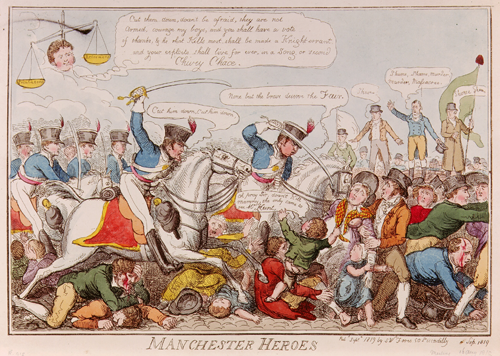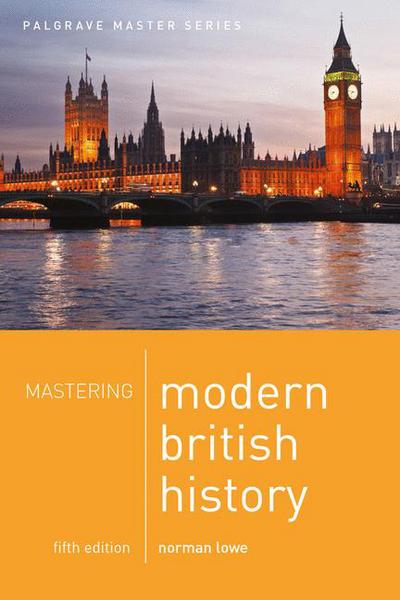


Are you sure you want to reset the form?
Your mail has been sent successfully
Are you sure you want to remove the alert?
Your session is about to expire! You will be signed out in
Do you wish to stay signed in?
Peterloo: 16 August 1819
Study the Sources A to G and then answer the questions that follow.
Click here to skip to the questions, scroll to read the sources.
Source A
| A letter from five Lancashire magistrates to Lord Sidmouth (the Home Secretary), 1 July 1819 We cannot have a doubt that some alarming insurrection is being thought about. We applaud the behaviour of many of the labouring classes, which has been peaceful until now, but we do not count on this continuing. Urged on by the speeches of a few desperate rabble rousers, we anticipate, at no distant period, a general rising, and possessing no power to prevent the meetings which are held weekly, we as magistrates are at a loss how to stem the influence of the dangerous and seditious doctrines which are continually spread around. Source: Quoted in R. Walmsley, Peterloo: the Case Reopened, Manchester University Press, 1969. |
Source B
A letter from the Home Office to the Manchester magistrates, August 1819 |
Source C
| Report in The Times, whose correspondent, John Tyas, was arrested along with Hunt, although he was well known as a strong critic of Hunt. One banner read 'Taxation and no Representation is unjust'; on another banner 'Equal Representation or Death; on a third 'Annual Parliaments, Universal Suffrage, and Vote by Ballot'. A posse of 300 or 400 constables marched into the field about 12 o'clock. Not the slightest insult was offered to them. The cavalry drew their swords and brandished them fiercely in the air: upon which they rode into the mob which gave way before them. Not a brickbat was thrown at them - not a pistol was fired during this period: all was quiet and orderly. They wheeled round the waggons until they came in front of them. As soon as Hunt and Johnson had jumped from the waggon (to surrender) a cry was made by the cavalry, 'Have at their flags'. They immediately dashed not only at the flags which were in the waggon, but those which were posted among the crowd, cutting indiscriminately to the right and left in order to get at them. This set the people running in all directions, and it was not until this act had been committed that any brickbats were hurled at the military. From that moment the Manchester Yeomanry Cavalry lost all command of temper. Of the crowd a large portion consisted of women. About 8 or 10 persons were killed, and besides those whom their own friends carried off, above 50 wounded were taken to the hospitals; but the gross number is not supposed to have fallen short of 80 or 100 grievously wounded. Was that meeting at Manchester an unlawful assembly? We believe not. Was the subject proposed for discussion (reform of the House of Commons) an unlawful object? Assuredly not. Was anything done at this meeting before the cavalry rode in upon it, contrary to the law or in breach of the peace? No such circumstances are recorded in any of the statements which have yet reached our hands. Source: The Times, 19 August 1819. |
Source D A cartoon (dated September 1819) by George Cruikshank, showing the Peterloo Massacre.

The head in the top left corner, representing the Prince Regent, is saying: 'Cut them down, don't be afraid, they are not armed, courage my boys....and he that kills most shall be made a Knight errant and your exploits shall live for ever in a song'. The cavalryman is saying 'Cut them down, cut them down'. The child is saying 'Oh pray Sir don't kill mummy, she only came to see Mr Hunt'. The bystanders are shouting 'Shame, murder'. Source: British Museum.
Source E
| A letter in The Courier written by an eye-witness. The meeting was then addressed by the several orators, showing much menacing attitude, and the shouts seemed to rend the very air and shake the foundation of the ground. The constables were tauntingly insulted wherever they were observed to stand; sticks and hats always waving on every acclamation. About half past one the magistrates deemed it expedient to read the Riot Act, and instantly after, the platform was surrounded in a masterly manner. The manoeuvre would have taken place without bloodshed had not the mob assailed the civil and military authorities with every resistance in their power, and particularly with missiles. Consequently the cavalry charged in their own defence; not without first being witness to a pistol shot from the multitude, against one of the gentlemen in our Yeomanry, who now lies in imminent danger. Quoted in P.Sauvain, British Economic and Social History 1700-1870, Stanley Thornes, 1987. NOTE: As the law stood in 1819, if a crowd did not disperse within an hour of the reading out of the Riot Act, then they were liable to be arrested. |
Source F
| A private letter from Lord Liverpool to George Canning, 23 September 1819. When I say that the actions of the magistrates at Manchester were justifiable, you will understand that I do not by any means believe that the course they pursued on that occasion was in all its parts prudent. A great deal might be said in their favour even on this head. But whatever judgement might be formed in this respect, being satisfied that they were substantially right, there remained no alternative but to support them. Source: Quoted in A.Aspinall and E.A.Smith (eds), English Historical Documents, vol. ll, 1783-1832, Eyre & Spottiswoode, 1959. |
Source G
| The view of a Marxist historian, E.P.Thompson, in his book The Making of the English Working Class, first published in 1963. My opinion is (a) that the Manchester authorities certainly intended to employ force, (b) that Sidmouth knew - and approved of - their intention to arrest Hunt in the midst of the assembly, and to disperse the crowd, but that he was unprepared for the violence with which this was carried out.....It really was a massacre. Hunt had exerted himself in the week before the event to ensure obedience to his request for 'quietness and order'. The presence of so many women and children was overwhelming testimony to the peaceful character of the meeting. Source: E.P.Thompson, The Making of the English Working Class, Penguin edn, 1980. |
(Total 30 marks)
